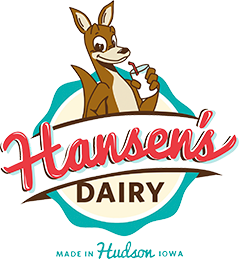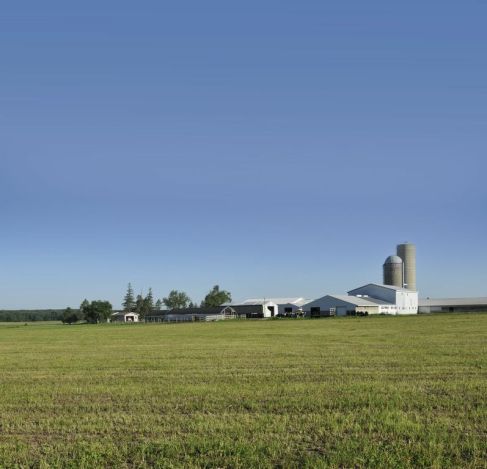Live like you’ll die tomorrow, farm like you’ll live forever
June 10, 2013 12:07 pmDairy farmers work diligently to uphold their legacy as good environmental stewards, and the Hansens are no different. Taking care of the land makes healthy cows, and healthy cows produce high quality milk. Most importantly, sustainability makes the world healthier for future generations. Here at Hansen’s Dairy, we implement many sustainability practices to help keep the planet healthy.
1) Water – The Hansens are very conscious of how they use water. When the cows are milked, milk comes out of the udder at 101°. A cooling system uses water to chill the milk to about 60°. This process helps keep the milk fresh from the farm to your refrigerator. That water is then recycled and given to the cows to drink.
2) Manure/Fertilizer – For every 1,000 pounds a dairy cow weighs, she’ll produce about 80 lbs. of manure each day. With 300 Holstein cows on the farm, that adds up quickly. Manure is cleaned out of the barns twice a day and pushed down a pipe that runs to a manure pit behind the barn. This pit holds 1 million gallons of manure. The manure is emptied from the pit twice a year, recycled and used on crops that are grown as feed for the cows, bringing its use full-circle. The Hansen’s high-tech equipment injects the manure directly into the soil, minimizing the odor, runoff and atmospheric losses while adding rich nutrients to the soil and replenishing its fertility.
3) Crop Rotation – The Hansens implement crop rotation to help replenish nitrogen in the soil. Crop rotation is also an important part of insect and disease control. Because many insects prefer to eat specific crops, continuous growth of the same crop gives them a steady food supply, and the insects’ population increases. To avoid this, the Hansens plant a field with alfalfa hay for four years and then corn for the next two years.
4) Conservation – The Hansens till their fields minimally and use contour and waterway systems to minimize topsoil erosion. When fields are frequently tilled, the topsoil becomes light and loose and can blow away in the wind. Contour farming minimizes erosion by planting crops around a hill, following its elevation contour lines, rather than planting in rows straight up the hill. These rows slow water run-off during rainstorms to prevent soil erosion and allow the water time to settle into the soil. Waterways provide paths for rainwater runoff to escape the field without taking precious topsoil with it.
5) Corn Usage – When the Hansens make silage for their cows to eat, they chop up the entire corn plant: stalk, leaves, corn, cob and all. This ensures none of the corn plant goes to waste. When the Hansens do harvest just the corn kernels, the rest of the plant is chopped up to make cornstalk bedding for the cows.
The crops the Hansens take from the land to make feed for their cattle returns to the land as fertilizer in the form of manure. Being good land stewards, the Hansens try to make sure everything taken from the land is replenished.



